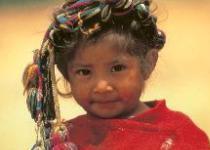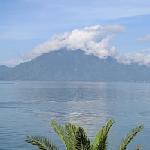
Guatemala Human Rights Commission/USA
.jpg)


.jpg)
Guatemalans Wary of Military Aid
The Christian Science Monitor
October 19, 2005[Excerpts, read the full article at: http://www.csmonitor.com/2005/1019/p06s02-woam.html]
By Jill Replogle
PANABAJ, GUATEMALA - Two graveyards are nearly all that is left of this Maya Indian village in the highlands - and they frame locals' views of the Guatemalan military.
Authorities declared an entire hillside a graveyard last week when they gave up the search for dozens of poor villagers buried in a mudslide triggered by hurricane Stan's rains. The other cemetary, whose gravestones stick out of the mud, contains the bodies of 13 locals killed in a 1990 massacre perpetrated by the Guatemalan army.
This and numerous other abuses committed here during the country's 36-year long armed conflict has left locals with an acute distrust for government security forces. So they were wary when troops showed up after the mudslides to offer assistance to the victims.
"People are scared because of what the army did here in the past," said Manuel Sisay Sapalu, former mayor of Santiago Atitlan, the municipality that includes Panabaj.
The Guatemalan military took steps toward mitigating those fears while playing a key role in responding to the disaster provoked by Stan, which forced over 140,000 Guatemalans to evacuate their homes. At least 663 people have died in Guatemala as a result of floods and mudslides provoked by the hurricane.
But at a time when military aid has been crucial for relief efforts in recent natural disasters from the Gulf Coast of the US to Pakistan, governments and citizens of affected areas are increasingly faced with questions as to the limits of appropriate military action. How long should the military stay? Should troops take a more active police role?
Questions like these were tackled at a two-day meeting of defense and security ministers from seven Central American countries and the US in Key Biscayne, Florida last week. With the recent devastation of parts of southern Mexico, Guatemala, and other Central American countries fresh in their minds, the ministers - including US Secretary of Defense Donald Rumsfeld - agreed to speed up plans for a rapid reaction force for use in disaster relief efforts, and discussed the possibility of creating a joint force to battle crime and narcoterrorism.
...
Two-thirds of the country's army personnel have been directly involved in disaster relief for the past two weeks, according to army spokesperson Colonel Jorge Antonio Ortega Gaytan. Nine helicopters on loan from the US Southern Command are also being used in relief efforts.
But, when it comes to creating a regional force, some critics question the idea of expanding the powers of Central American militaries with poor records in human rights and transparency.
"The problem is that their range of action is easily extended," says Arturo Chub, an analyst at the Guatemalan non-governmental organization, Security in Democracy. Mr. Chub and other critics say the Guatemalan military has traditionally been involved in a range of abusive and lucrative activities outside of its mandate.
...
But some victims of the mudslide in Panabaj were still cautious about welcoming military aid.
"If they come to help that's fine, as long as they don't do anything else," says Juana Ixbalan Vasquez, who lost her home in the mudslide. Former mayor Sisay Sapalu said soldiers were welcome to help rebuild the village, as long as they left their guns in the barracks.
"If people see the army constructing and not destructing, there's going to be a change in this country," he says.
Home | Site Map | Contact Us
3321 12th Street NE, Washington, DC 20017
This site is maintained by the Guatemala Human Rights Commission/USA
as a means of informing the general public of the Commission's work
on behalf of the people of Guatemala
